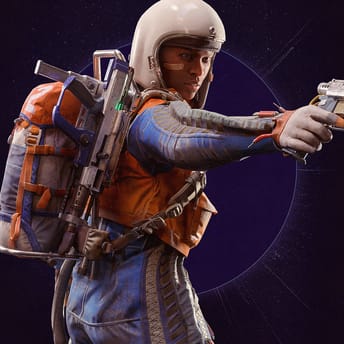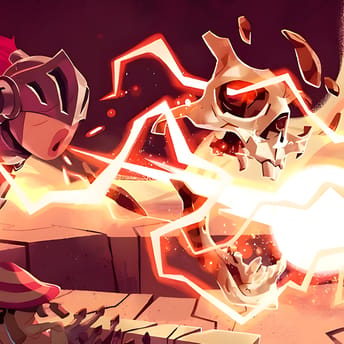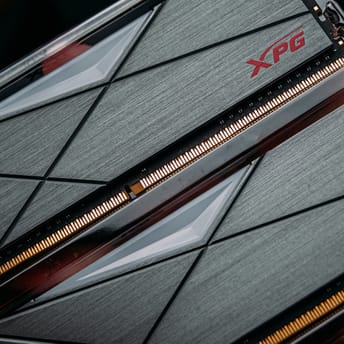
Metal Gear Solid Delta: Snake Eater System Requirements for PC Guide
Metal Gear Solid Δ: Snake Eater launches on August 28, 2025, for PC (Steam), PlayStation 5, and Xbox Series X|S. Developed and published by Konami, it’s a ground-up remake of 2004’s Metal Gear Solid 3: Snake Eater (originally created by Hideo Kojima), although Kojima isn’t involved in this release.
Buyers of the Digital Deluxe edition got 48 hours of early access starting August 26. Thanks to it, the first player reports are already flagging optimization problems and assorted issues on PC, with the most significant point being that the game has a hard 60 FPS lock.
This guide analyzes recommended PC hardware for Metal Gear Solid Delta, including target builds for 1080p and 1440p 60 FPS, the optimal CPU and GPU tiers, and VRAM and RAM requirements, as well as why an SSD is essential. Because the remake runs on Unreal Engine 5 with DirectX 12 and heavy asset streaming, we also explain which settings matter most, prioritize upgrade paths, and help you balance image quality and performance.
Metal Gear Solid Delta: Snake Eater system requirements
Minimum
Recommended
OS
64-bit Windows 10
64-bit Windows 10
Processor
- Intel Core i5-8600
- AMD Ryzen 5 3600
- Intel Core i7-8700K
- AMD Ryzen 5 3600
Graphics Card
Nvidia GeForce RTX 2060 Super
Nvidia GeForce RTX 3080
Video Memory (VRAM)
8 GB
10 GB
System Memory (RAM)
16 GB
16 GB
Storage
100 GB, SSD recommended
100 GB, SSD recommended
Minimum PC Requirements for MGS Delta: Snake Eater
To run the game at minimum settings, you’ll need a GeForce RTX 2060 Super-level graphics card with 8 GB of video memory, an Intel Core i5-8600 or AMD Ryzen 5 3600 processor, 16 GB of RAM, Windows 10/11 (64-bit), and about 100 GB of disk space (SSD is highly recommended).
What does this mean in practice:
- The minimum system requirements target 1080p/30fps at low to medium graphics settings and balance/performance upscaling preset without ray tracing.
- 8 GB of VRAM is the actual threshold. With 6 GB, the game may encounter video memory limitations during intense scenes, resulting in aggressive texture streaming compression or stuttering and frame rate drops.
- The minimum CPU requirement is a seven-year-old chip with 6 cores. For a UE5 title with asset streaming, this is a reasonable lower limit: background data loading and AI calculations are more stable on 6 cores and higher. Micro-freezing is possible on quad-core chips.
- The suggestion to use SSD is logical: the engine constantly loads textures, and using a HDD will result in loading delays and texture pop-ins.
The minimum requirements for Metal Gear Solid Delta: Snake Eater look relatively high for a remake, even on UE5: you need a six-core CPU, 16 GB of RAM, an SSD with at least 100 GB of free space, and a video card of the RTX 2060 Super level with 8 GB of memory. This is a pass to 30 FPS at Full HD with DLSS or FSR enabled at a medium preset, low graphics, and no rays.
Minimum requirements issues
The official minimum specifies only Nvidia GPU without an AMD video card counterpart. This is a rare occurrence for PC releases in today’s age. AMD graphics cards hold a notable position in the PC gaming hardware market, no longer plagued by driver issues as they were in the past. The Radeon RX 5700 and RX 6600 (both with 8 GB of VRAM) are close to the GeForce RTX 2060, but the reliability of optimization profiles is not guaranteed, since there’s no official acknowledgment.
With Intel GPUs, the story is different. Although the Arc A580 is close to the listed by Konami target card, you shouldn’t expect the game to run as well as on an Nvidia or AMD GPU. Without explicit confirmation of Intel video card support, it’s a gamble whether the gaming experience will devolve into a slideshow or not.
The game takes 100 GB of disk space, and there’s no difference between the minimum and recommended—meaning there’s no texture storage optimization and no separate high-resolution texture pack to download, which is a downside.
Recommended PC Requirements for MGS Delta: Snake Eater
Recommended configuration: Core i7-8700K or Ryzen 5 3600 CPU, 16 GB RAM, a GeForce RTX 3080-level video card. OS, RAM, and storage requirements remain unchanged from the minimum requirements: Windows 10/11 (64-bit), 16 GB of system memory, and 100 GB of storage space, preferably on an SSD.
What does this mean in practice:
- In theory, the recommended system requirements target 1440p/60fps at medium graphics settings and the quality/balance upscaling preset, or 1080p with better visuals and performance. However, we must remember that the frame rate in PC port locked at 60 FPS (by the way, Konami has still not commented on this problem, even in the latest pre-release patch note), so there’s no point in targeting a higher frame rate. Quite sad for anyone with a 120Hz+ display.
- The RTX 3080 with 10 GB of VRAM provides sufficient room for high textures and anti-aliasing without constantly limiting video memory.
- The AMD Radeon RX 6800 XT is close in terms of performance; with comparable power, you can expect similar presets, although they are not officially listed. No Intel GPU can be recommended here.
- The Core i7-8700K and Ryzen 5 3600 cover physics, AI, and resource streaming without stuttering, provided the system is not overloaded with other extraneous tasks, such as streaming.
- 16 GB of RAM is still sufficient, but only with a neat background. Browsers, Discord, storefronts, overlays, and video recording can quickly consume free system memory, so you will need to monitor it (only if you have 16 GB of memory).
- Nothing changed in the storage part: use SSD to avoid excessive loading times and pop-ins.
Summary for recommended hardware
The recommended PC requirements set the bar for 1440p at 60 FPS with an emphasis on a powerful GPU. If you stick to this hardware class and carefully adjust the texture quality, various filtering options (for example, anisotropic filtering and ambient occlusion), and upscaling, the game should run stably and without noticeable dips.
Metal Gear Solid Delta: Snake Eater PC Port Hardware Analysis
The official minimum requirements are as follows: Windows 10/11 (64-bit), Core i5-8600 or Ryzen 5 3600, 16 GB of RAM, GeForce RTX 2060 Super with 8 GB of video memory, and approximately 100 GB of disk space. The developer recommends explicitly installing the game on an SSD for optimal performance.
In practice, this targeting for 1080p with 30 FPS at low settings, where the bottleneck is not so much the processor as the video memory. The 8 GB VRAM threshold here for a reason: with 6 GB, there is a high likelihood of hitting the limit, resulting in texture compression, artifacts, and reloading. Six-core CPUs, such as the Core i5-8600 and Ryzen 5 3600, provide the necessary reserve of threads for background streaming of a game’s assets. Formally, the game starts from the HDD, but delays in loading data and the sudden appearance of textures will deteriorate your gaming experience.
The recommended requirements are moderate: Windows 10/11 (64-bit), Core i7-8700K or equivalent Ryzen 5 3600, 16 GB of RAM, GeForce RTX 3080, and a same 100 GB SSD.
This is designed for 1440p resolution with medium settings, achieving approximately 60 frames per second. The RTX 3080 with 10 GB of VRAM offers comfort for high texture presets and stable asset streaming. The 16 GB of RAM remains sufficient with a clean background. Still, background processes can easily consume several gigabytes of system memory, so it is better to free up memory before launching the game.
Key takeaways
The comparison of the two specs clearly shows where the main cost of performance is incurred. The transition from the RTX 2060 Super to the RTX 3080 results in a one-and-a-half to two-fold increase in raster tasks at resolutions of 1080p to 1440p. The processor remains in the shadow of the video card: six cores with twelve threads in both lists are sufficient to prevent the CPU from being limited by the typical number of background tasks for the game.
Konami hasn’t provided a maximum-quality preset. With an FPS cap and current performance issues on PC, it’s pointless to speculate about the hardware required for 4K and maximum settings with ray tracing.
In terms of technology, the game uses Unreal Engine 5. Hence, the requirement for DirectX 12 and the emphasis on SSD are predictable: the engine actively streams assets from the drive and is sensitive to input-output delays.
Upscaling in Metal Gear Solid Delta
The PC version has DLSS and FSR, as well as the TSR upscaling built into UE5. There is no support for Intel XeSS. Surprisingly, the game lacks any frame generation tech, which is highly unusual for a AAA title in 2025.
For 1440p, start with the Quality profile to maintain image clarity. For 4K, it is more sensible to switch to Balanced or Performance.
60 FPS lock in MGS Delta: Snake Eater (and other known issues)
Besides poor performance, the PC version has three critical issues:
- Multiple outlets and player reports confirm a hard 60 FPS cap.
- Lack of native ultrawide support (21:9/32:9).
- Bugged HDR with limited controls.
Early workarounds to uncap frame rate via config edits proved unreliable, as the value often reverts back to 60 FPS.
There are also compatibility nuances. The official requirements specifically name Nvidia GPUs only. In terms of performance, AMD has comparable RX 6600 and RX 5700 for the minimum and the RX 6800 XT for the recommended. However, since they are not explicitly listed, the same performance level isn’t guaranteed. This does not mean that the game works poorly on AMD, but when analyzing problems with FPS, it’s worth remembering this caveat. And, for GPUs from Intel, it’s essentially a dice roll.
TL;DR
Metal Gear Solid Δ: Snake Eater on PC is best treated as a sub-60-FPS title for now. Aim for 1080p or 1440p with DLSS/FSR rather than chasing 4K, as the hard frame rate cap and performance issues currently limit the upside.
The minimum specification (RTX 2060 Super-class GPU, 8 GB VRAM, Core i5-8600/Ryzen 5 3600 CPU, 16 GB RAM) corresponds to 1080p/30fps on low, while the recommended specification (RTX 3080-level graphics card, 10 GB VRAM, Core i7-8700K or Ryzen 5 3600) targets 1440p/60fps or Full HD at better settings. Six CPU cores are sufficient, thanks to UE5’s GPU-bound profile, but an SSD is recommended due to the heavy asset streaming requirements. DLSS/FSR helps stabilize FPS; there’s no frame generation or XeSS at launch. The game requires approximately 100 GB of storage space, and no effort has been made to optimize textures and other assets. Additionally, generally poor performance, HDR bugs, and the lack of native ultrawide support are reported.
Specific hardware matters. AMD GPUs in the RX 5700/RX 6600 (for the minimum) and RX 6800 XT (for the recommended) range should land near their Nvidia counterparts, but they’re not explicitly listed; Intel Arc remains a gamble until confirmed support is available. Prioritize GPUs with at least 10-12 GB of VRAM. Keep background apps lean if you’re on a system with RAM limited to 16 GB. If you experience low FPS, stutters, or frame drops, wait for new GPU drivers and game patches, and check the guide on optimizing graphical settings (coming soon).















